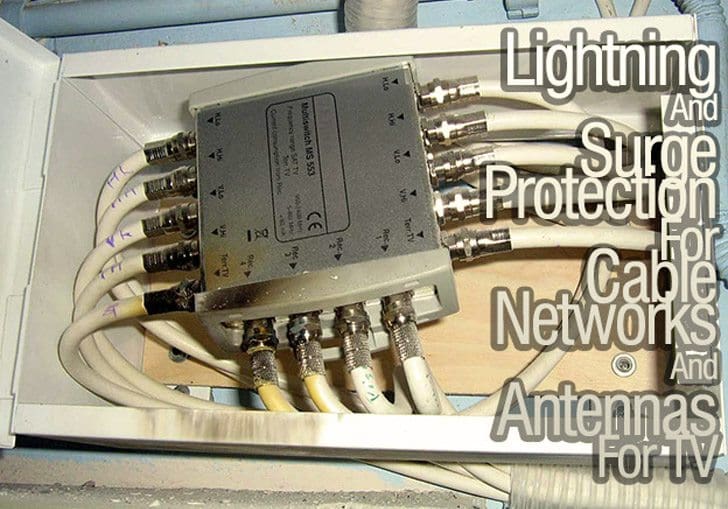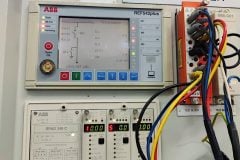
Continued from part one:
Lightning And Surge Protection For Cable Networks And Antennas For TV (Part 1)
Protective Mechanisms
If an antenna is protected by isolated air-termination systems it means:
– That in the area of flat roofs an air-termination rod will be installed with the required separation distance s, putting the whole antenna arrangement (mast and antennas) in the protective zone of the protective angle (Figure 4).
Now the antenna arrangement is no longer in lightning protection zone LPZ 0A (risk of direct lightning currents) but lightning protection zone LPZ 0B (risk of indirect impulse currents and of the unattenuated electromagnetic field of lightning).

– That in the area of pitched roofs an air-termination rod will be installed with the required separation distance s using highly insulating distance holders (DEHNiso distance holders) to fix it at the antenna mast, putting the whole antenna arrangement (mast and antenna) into the protective zone of the protective angle (according to the applicable class of LPS) – Figure 5.

Also here the antenna arrangement is no longer in lightning protection zone LPZ 0A (risk of direct lightning currents), but in lightning protection zone LPZ 0B (risk of indirect impulse currents and of the unattenuated electromagnetic field of lightning).

These surge protective devices to be used both as single devices and for rail mounting protect the downstream devices against inductive and/or capacitive inputs of waveform 8/20 μs, arising from cloud/cloud flashes, distant strikes or direct strikes into the isolated air-termination system.
Surge protective devices Type 3 have to be provided for any electrical equipment with 230/50 Hz downstream the equipotential bonding bar, which is installed for the coaxial cable shields. Care has to be taken that the lightning equipotential bonding is carried out for all systems leading into the building.
A lightning protection system not being installed, the following is recommended:

– An air-termination rod mounted with insulated distance holders prevents from a direct strike to the antenna. For this the air-termination rod has to be connected with the earth electrode by a separately installed earthing conductor (Figure 7) to be guided preferably on the outside of the building and to be connected with the earth electrode at ground level.

– If the antenna mast is earthed directly, combined lightning current and surge arresters have to be provided (Figure 8), because partial lightning currents, which the surge arresters are not able to control, will be conducted in this case through the coaxial cables.
The antenna mast has to be connected with the earth electrode by an earthing conductor.

Underground utility lines of systems require combined lightning current and surge arresters being able to carry lightning currents. They also have to be mounted near the point of entrance into the building (Figure 9).
Reference: Lightning Protection Guide – DEHN Inc. (dehn.de)
Copyright Notice
This technical article is protected by U.S. and international copyright laws. Reproduction and distribution of PDF version of this technical article to websites such as Linkedin, Scribd, Facebook and others without written permission of the sponsor is illegal and strictly prohibited.© EEP-Electrical Engineering Portal.
Related electrical guides & articles
Premium Membership
Edvard Csanyi
Hi, I'm an electrical engineer, programmer and founder of EEP - Electrical Engineering Portal. I worked twelve years at Schneider Electric in the position of technical support for low- and medium-voltage projects and the design of busbar trunking systems.I'm highly specialized in the design of LV/MV switchgear and low-voltage, high-power busbar trunking (<6300A) in substations, commercial buildings and industry facilities. I'm also a professional in AutoCAD programming.
Profile: Edvard Csanyi











Very good article.
The demand for bandwidth and reliability requires surge protection devices to be incorporated in today’s networks. PolyPhaser, Transtector and LEA offer high quality, industrial surge protection solutions for sensitive electronics. And the network requirements are full end-to-end power and signal integrity. Recently installed Category 5 cable from Techpart, which works really fine for me.
Very nice article.
A NEW LECTURE ONHOW TO CONDUCT ACRC FLASH ANALYSIS USING ETAP
http://WWW.ETAP-COURSES.COM